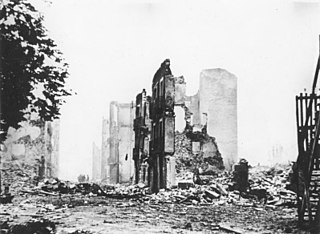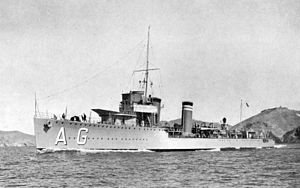
Francisco Franco Bahamonde was a Spanish general and politician who ruled over Spain as a military dictator from 1939, after the nationalist victory in the Spanish Civil War, until his death in 1975. This period in Spanish history is commonly known as Francoist Spain.
The Condor Legion was a unit composed of military personnel from the air force and army of Nazi Germany, which served with the Nationalists during the Spanish Civil War of July 1936 to March 1939. The Condor Legion developed methods of strategic bombing which were used widely in the Second World War shortly afterwards. The bombing of Guernica was the most infamous operation carried out by the Condor Legion. Hugo Sperrle commanded the unit's aircraft formations and Wilhelm Ritter von Thoma commanded the ground element.

The Corps of Volunteer Troops was a Fascist Italian expeditionary force which was sent to Spain to support the Nationalist forces under General Francisco Franco against the Spanish Republic during the Spanish Civil War, 1936–39.

General José Sanjurjo y Sacanell, 1st Marquess of the Rif, was a General in the Spanish Army who was one of the chief conspirators in the military uprising that led to the Spanish Civil War.

The Battle of Cape Palos, also known as the Second Battle of Cape Palos, was the biggest naval battle of the Spanish Civil War, fought on the night of March 5–6, 1938, east of Cape Palos near Cartagena, Spain.
The Battle of Cape Spartel was a naval battle of the Spanish Civil War that broke the Republican blockade of the Strait of Gibraltar, securing the maritime supply route to Spanish Morocco for the Nationalists early in the war. The action occurred on September 29, 1936 between two Nationalist cruisers and two Republican destroyers.
The Spanish Civil War had large numbers of non-Spanish citizens participating in combat and advisory positions. The governments of Germany, Italy—and to a lesser extent Portugal—contributed money, munitions, manpower and support to Nationalist forces led by Francisco Franco. The government of the Soviet Union, and to a lesser extent France and Mexico, likewise aided the Republicans (Loyalists) of the Second Spanish Republic. The aid came even after all the European powers had signed a Non-Intervention Agreement in 1936. While individual sympathy for the plight of the Spanish Republic was widespread in the liberal democracies, pacifism and the fear of another world war prevented them from selling or giving arms. The Nationalist pleas meanwhile were answered within days by Hitler and Mussolini.

The Churruca class was a Spanish destroyer class built for the Spanish Navy based on a British design. Eighteen ships were built, with two being sold to Argentina and commonly referred to as the Cervantes class. The last two members of the class are sometimes referred to as a separate class, the Alava class.

Sánchez Barcáiztegui was a Churruca-class destroyer of the Spanish Republican Navy. She took part in the Spanish Civil War on the side of the government of the Second Spanish Republic.
Almirante Ferrándiz was a Churruca-class destroyer in the Spanish Republican Navy. She took part in the Spanish Civil War on the government side.

José Luis Díez was a Churruca-class destroyer in the Spanish Republican Navy. She took part in the Spanish Civil War on the government side.

Almirante Cervera was a light cruiser and lead ship of the Almirante Cervera class of the Spanish Navy. She was named after the Spanish admiral Pascual Cervera y Topete, commander of the Spanish naval forces in Cuba during the Spanish–American War. She was part of the Spanish Republican Navy between 1931 and 1936, year in which she became a key player of the Nationalist Fleet in the Spanish Civil War.

The Spanish coup of July 1936 fractured the Spanish Republican Armed Forces and marked the beginning of the Spanish Civil War. Following a period of troubles in the Second Spanish Republic, a group of officers attempted to overthrow the left-wing Popular Front government, elected five months previously, in a military coup. Planning started in early 1936, and the coup was launched on 17 and 18 July. The coup failed to take complete control of the country and civil war ensued.

German involvement in the Spanish Civil War commenced with the outbreak of war in July 1936, with Adolf Hitler immediately sending in powerful air and armored units to assist General Francisco Franco and his Nationalist forces. The Soviet Union sent in smaller forces to assist the Republican government, while Britain and France and two dozen other countries set up an embargo on any munitions or soldiers into Spain. Nazi Germany also signed the embargo but simply ignored it.

From 1939 until January 1944, the intelligence services of Germany and Italy, with the assistance of the Spanish government, maintained a network of stations in the vicinity of the Strait of Gibraltar. The stations tracked the movements of Allied warships and merchant vessels and became a valuable source of intelligence to the Axis, for attacks on Allied convoys. The British Government considered attacking the stations on two occasions during 1942 but decided instead to use diplomatic pressure to have them closed. The stations are believed to have ceased operations in January 1944.


























